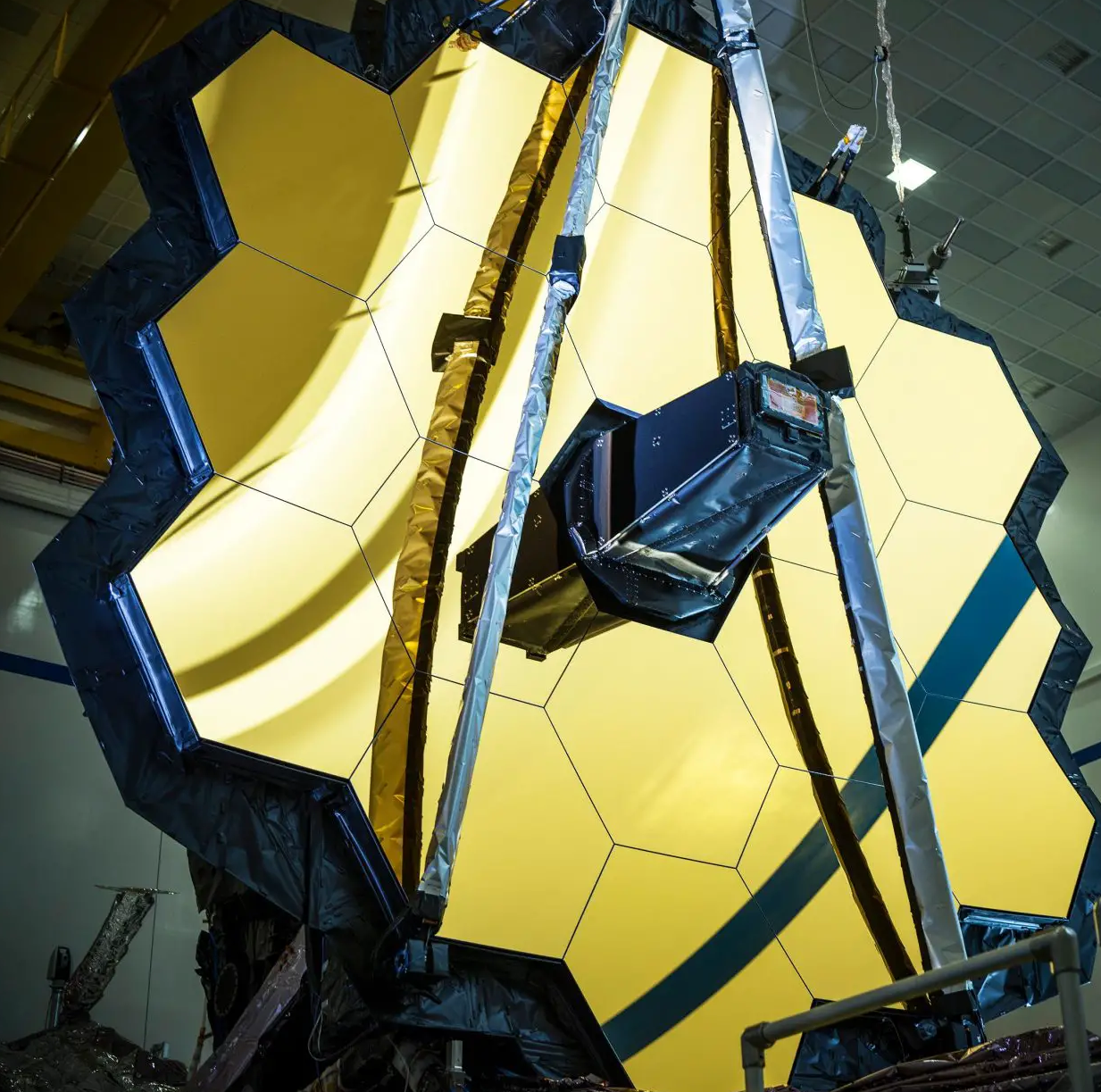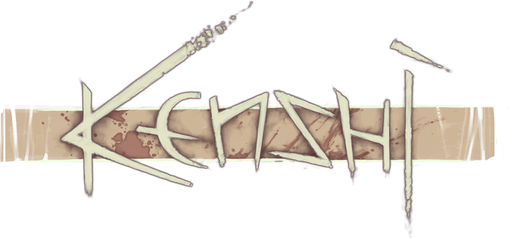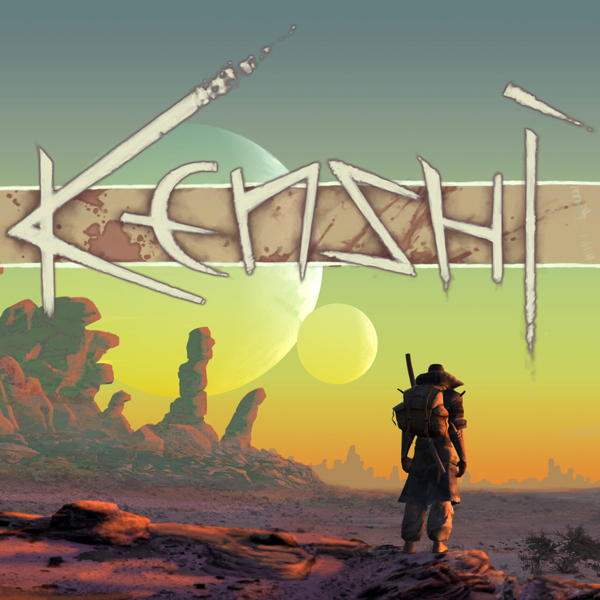 LUNALACUNA.neocities.org
LUNALACUNA.neocities.org 
Kenshi

 LUNALACUNA.neocities.org
LUNALACUNA.neocities.org 
Kenshi


The sandswept dunes of the moon of Kenshi are bleak and unforgiving. Cannibal tribes ravage the Great Plains to the north, while slavers roam the Great Desert to the east. The stoic honor-bound warriors of the Shek Kingdom hold back the endless waves of The Bugmaster to the west, while the acrid southern Black Desert repels any visitors with its acid rain and industrial pollution. Do you, someone utterly unremarkable, with only a loincloth, an iron club, and c1,000 to your name, have what it takes to survive this brutal wasteland? Will you make a name for yourself and be remembered alongside such legendary figures as Cat-lon and Tinfist? Or will you bleed out, face down in the sand like so many others.
Kenshi is a brutal game set on a post-apocalyptic desert moon. The game’s creator, Chris Hunt (who’s been working on the game mostly by himself since 2006) describes its aesthetic as swordpunk, drawing heavily on medieval Japanese imagery of samurai and ninja. It combines this aesthetic with post-apocalyptic science fiction to great effect, creating something rather unique. The combination of these two themes can be seen all across the game’s world. As you explore the moon of Kenshi, you should expect to see the rusting skeletons of half buried starships or the remains of a previous civilization’s city. Though you may also find simple peasant farmers, cultivating rice in the moon’s few moist locations, protecting themselves from the sun with simple straw hats, or a secret ninja base, fighting against the despotic, slaving empire whose labor camp they escaped from.
Kenshi’s world is brutal, and this aspect of the setting is reflected perfectly in its gameplay. The game’s default start sets you down in the small, run-down, mostly ruined city called “The Hub.” Your character begins with 1 in every stat, and with no armor, a near-useless weapon, and 1,000 cats (the game’s currency, named after Cat-lon, the robotic ruler of the Second Empire). In all likelihood, while playing this game, you’ll die a lot, and you’ll need to be constantly saving and reloading saves. Outside of the game’s small cities, which typically function as safezones, there’s no limit to how many random people or animals that will kill a beginning player starting out. Whether it's Hungry Bandits being a little too rough as they try to knock your character out and empty their pockets of money and food, a Beak Thing that takes your leg off with a single bite, you’ll be spending a lot of time bleeding out on the sand.
Why play a game that’s so unfair, then? Why suffer through a game that’ll kill or maim your characters at the drop of a hat? Because the defiance against a setting, and seeing how your characters can survive, grow from, and overcome these obstacles is ridiculously satisfying.
When I say your character grows from such adversity, I’m not kidding. One of the best ways to level Toughness, the stat that determines how much damage a character takes when they’re hit, is to get beat up by bandits. If a Beak Thing does eat one of your limbs, you can replace it with a robotic limb, which is probably better than your old limb anyway.
Chris Hunt describes the game as a free roaming squad-based RPG, focused on open-ended sandbox gameplay features rather than a linear story, and while I don’t think it's possible to summarize the game any better than that, it’s a bit of a vague definition and leaves out a few things. Since it’s impossible to list the number of potential things you could do in game, I’ll describe what I tend towards doing when I play Kenshi.
My favorite start is “Rock Bottom” which drops your character in the middle of the Great Desert and starts them off missing an arm. I personally find this start interesting, as it gives you a solid goal to work towards, that being getting a new arm.
While the Great Desert is dangerous, filled with roaming slavers looking to make some money, as well as giant insectoid Skimmers, it isn’t too far to make it to Heft, the capital of the United Cities. Heft has a robotics workshop, where you can get a new arm, and you have a couple of options for replacing your limb. The most basic way to make money is to mine copper, which will level your Laboring skill (allowing you to mine faster) as well as your Strength skill as you haul ore to a shop.
Another good way of earning money is theft. The easiest way to do this is to wait at the gates to a city until a group of bandits, monsters or other miscreants enter combat with the well-armored and well-skilled city guards. The guards will always win these fights, and it's simple enough to take the weapons and armor off of defeated foes and sell those for cash.
Robotic limbs, however, are fairly expensive. Unless you want to settle with something substandard, you can also try to steal a new limb from the shop. Alternatively, Heft isn’t too far from the Black Desert, an area characterized by its constant acid rain, heavy industrial pollution, and robotic inhabitants. If you can stand the rain, there's some ruins you can scavenge to make some good money.
You could play the entire game like that, if you’d like. Playing a single character as a treasure hunter, slowly training up their skills to actually stand a chance at combat is a totally valid way to play. There are other options, however. You can recruit other characters to your squad, and have them fight together, or you could even send one to explore the other side of the continent. With enough people, you can even build a city of your own, allowing you to craft high-grade weapons, trade goods, cultivate your own food, and protect it all with a high wall of scrap, protected by wall-mounted harpoon turrets.
The game has rather deep lore, much of which is told environmentally. There’s a few fascinating locations, such as Venge, an area scored by a still active orbital laser that incinerates anyone unlucky enough to find themselves in its path. The city of Mourn, though recently ruined, appears to have been built in the remains of an O'neill Cylinder, half-sunk into the sand. In Obedience, you’ll find the remains of giant humanoid robots, melted into the valley’s floor of once molten metal.
Lore and backstory is also introduced through character dialogue. One of the more interesting groups in Kenshi are the skeletons, immortal humanoid robots. They can be found across the moon’s desert continent, but they seem to prefer to hide far away from organic life in the acid rain of the Black Desert, in Black Desert City.
The game’s graphics and performance are serviceable. Visually, the game isn’t too much to look at. Close up, the models and details are decent, though you won’t usually be able to appreciate them, since you’ll be spending a decent amount of time zoomed out to watch for potential threats. Similarly, the game has to pause itself every so often to load in new areas and zones. This seems to be more of a limitation of the engine the game was built in, having been made in the mid 2000s.
Overall, Kenshi is a bit of a difficult game to approach due to its ridiculously hostile nature, but those who are able to overcome the challenge will find a rewarding experience and a well-realized world with a deep and fascinating history. Hopefully the game’s performance will be better in the currently in development Kenshi 2, which will be set 1,000 years earlier, during Cat-lon’s reign of the second empire.
Featured 
Featured Music:

Kenshi Original Soundtrack
Youtube
Featured Video:
Kenshi - The Torso Solo Experience (19:22)